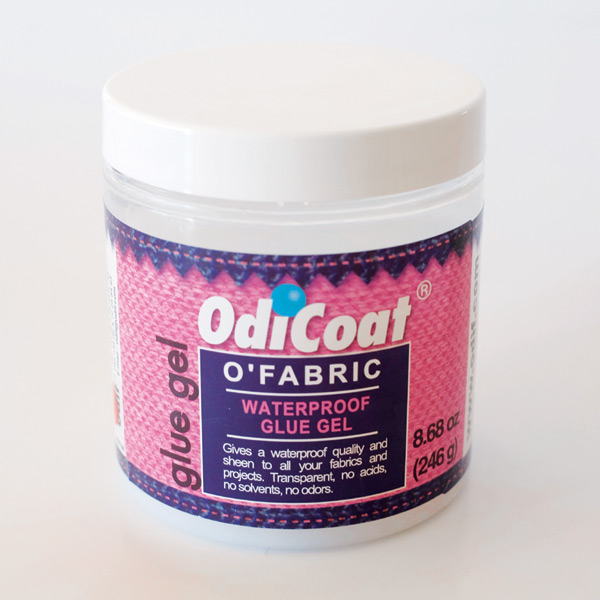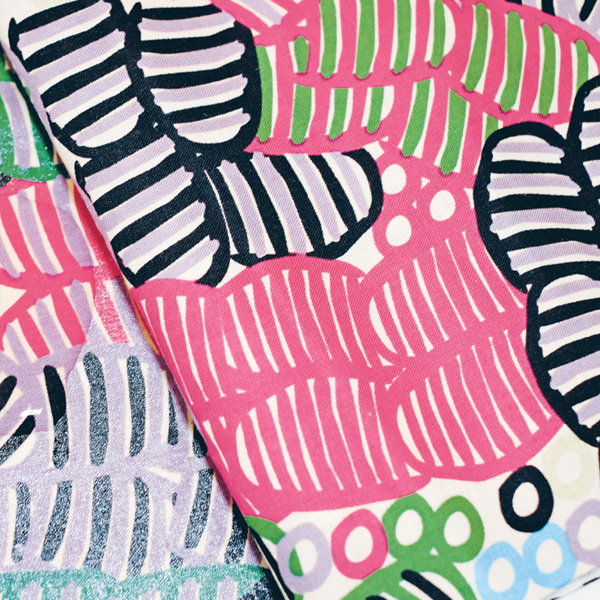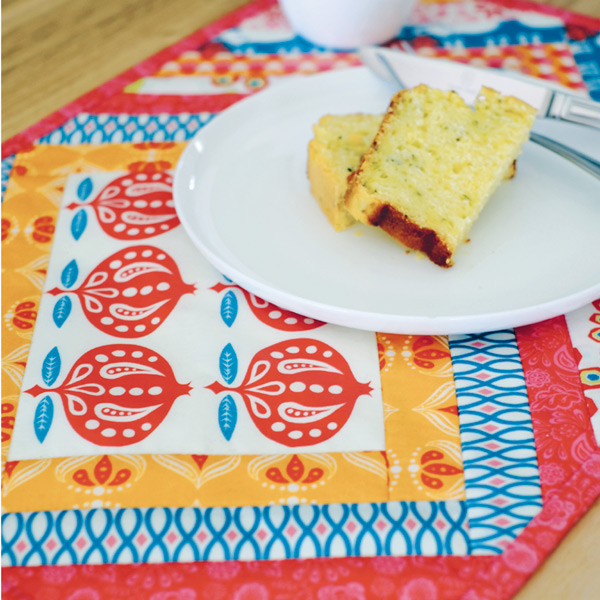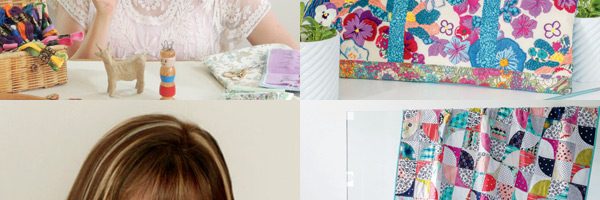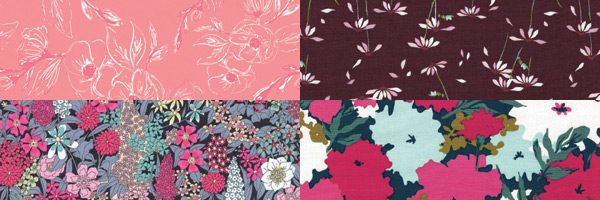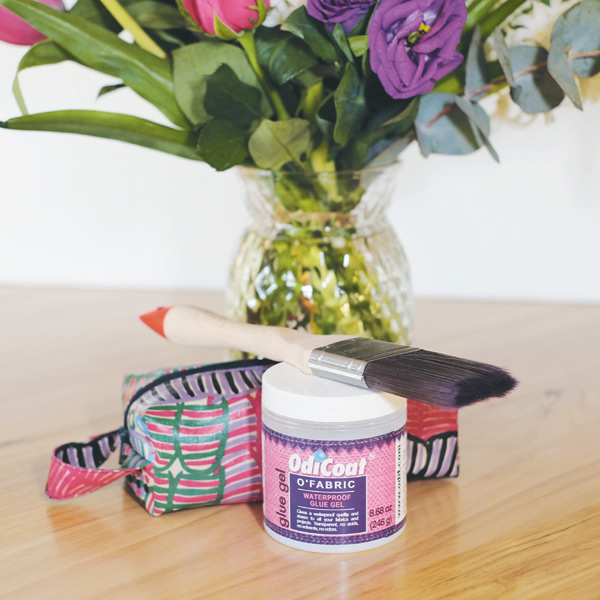
Road Test: OdiCoat® Waterproof Glue Gel by Odif®
Driven by Michelle Marvig
Today we expect many of our objects to multi-task. For instance, our phones not only make calls but take photos, navigate, email and are even alarm clocks. Some of these features require us to download and use an app to facilitate the function. I think of Odicoat® as an app for fabric. It is used to waterproof fabric.
Odicoat® is a very viscous liquid in a plastic tub. When you open the tub you find an opaque white substance that has the consistency of almost set jelly with very little smell. The manufacturers call it a waterproof glue gel. It is designed to alter the finish of your fabrics, changing normal fabric into an oil cloth finish. While the first and most important function is to waterproof the fabric, the manufacturer does state that it also provides anti-UV protection for the fabrics. I was not able to test this second claim due to time restraints. And while this is a kind of plastic coating, it is bisphenol-A (BPA)-free. BPA is a chemical used in some plastic containers and coatings which is questionable. And as we may be applying Odicoat® on items used around food, it is an important consideration.
Add a touch of patchwork charm to your table with this tablerunner and placemat set pattern!
Odicoat® is very easy to use. I placed down a large plastic sheet under my test fabrics. I used a 38mm-wide paint brush to paint the surface of the fabric. While it appears whitish in colour, it dries clear. The first coat was actually hard to see and did not change the look of the fabric. However, you require three coats to complete the waterproofing. As each subsequent coat was applied, the fabric looked shinier and wetter. It needs at least one hour between coats so that each coat has fully dried before the next is applied. After the three coats, the fabric is left to completely dry for 24 hours.
The final step in the process is to cover the coated surface and iron to complete the seal. Prior to ironing it was a little rough, but ironing did smooth out some of this. If you use baking paper (parchment is suggested, but baking paper is what I had on hand and it worked very well) it will give a satin finish, while a Teflon-coated appliqué mat will give a shinier finish. The item can then be washed in warm water. When I worked with the fabric I did have excess coating around it, like a thin, clear plastic film. It still peeled off the plastic sheet that I used and did not cause a problem. The brush is simply washed out in warm water. The end result for the fabric was that it now looked like a satin-finish oil cloth or plastic-coated fabric which was waterproof.
Having coated the fabric, however, what was it like to sew? The same as any other laminated fabric. The back of the coated fabric is still cotton, so if you can work from the wrong side it is just like sewing with normal fabric. However, if you have to work from the right side of the coated fabric then a walking foot is needed as the coating, like a laminated fabric, grabs the foot and is hard to feed along the seam. The thickness makes it hard to pin so I used sticky tape instead to hold some of the pieces in place before the seam was sewn. And each stitch or pin hole is a break in the coating, so it is giving the water an entry point.
Create your own Dresden Plate Placemats
I then decided to see what would happen if the Odicoat® was used on a stitched item. I used a stitched and quilted placemat as this is a product that would greatly benefit from being impervious to liquid. It was prepared in the same manner as the fabric, but I watched the amount of Odicoat® I placed around the binding as I did not want to have to deal with an extra lip of the plastic around the placement. I could easily cut this off on the fabric, but not so on the finished item. With a quilted item you need to make sure you keep the coating even and do not allow it to pool in the lower, ditched seamlines or around the inner edge of the binding. I am very happy with the result and the coating did not leak through to the underside.
I enjoyed playing with this product and can see other uses for Odicoat®. I am off to buy some new bibs for the latest grandchild. He will be able to get very messy and the bibs will still be beautiful. Maybe I could coat the pram too? I can also see this product used in art quilts, where you might want your ‘water’ to appear shiny, or glue loose threads under the coating for extra texture. I am sure there are many more things that can be executed with this useful item.

